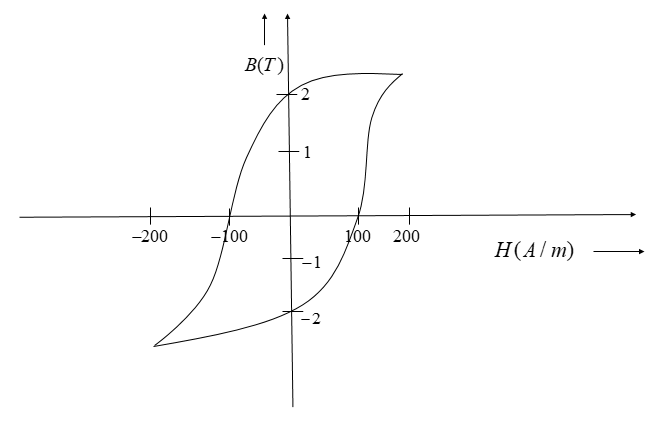Question
Question: The \(B-H\) curve for a ferromagnet is shown in the figure. The ferromagnet is placed inside a long ...
The B−H curve for a ferromagnet is shown in the figure. The ferromagnet is placed inside a long solenoid with 1000turns/cm. The current that should be passed in the solenoid to demagnetize a ferromagnet completely is:

a) 2mA
b) 1mA
c) 3mA
d) None of these
Solution
B-H curve shows that a given material doesn’t not follow the same path during magnetization and demagnetization. This creates a difference in the current, which is responsible for reduction of magnetization of the material. The current, at which the current demagnetizes, no longer remains zero but has a negative value. We will use this concept along with the basic formula to find the answer.
Formula used: Hl=NI
Complete step by step answer:
The B-H curve represents the magnetization and demagnetization characteristics of a ferromagnetic material. It shows the amount of current required for a particular magnetization to be achieved. It also shows that for a given ferromagnetic material, the path traced during magnetization and demagnetization are not the same.
We know that the magnetic intensity has a unique relation with the current passing through the conducting wire along with the number turns. This relation is as follows:
Hl=NI
Where, H is the magnetic field intensity, l is the length of conductor, N is the number of turns, I is the current through the conductor.
We can modify the above equation as:
H=lNI ------(i)
Here, it can be clearly seen that for the complete demagnetization of the ferromagnetic material, the y-axis component must be zero, i.e., B=0. Clearly, at this point the value of H is 100A/m.
Putting this value of H in equation (i), we get:
m100A=10−2m1000turnsI
I=1mA
So, the correct answer is “Option B”.
Note: Don’t panic when length is not mentioned in such questions. Generally, the length is already present in other parameters often disguised. For example, here length was present in the N given in question as turns/m. Hence, because of this, we did not require the absolute length to solve the question.
